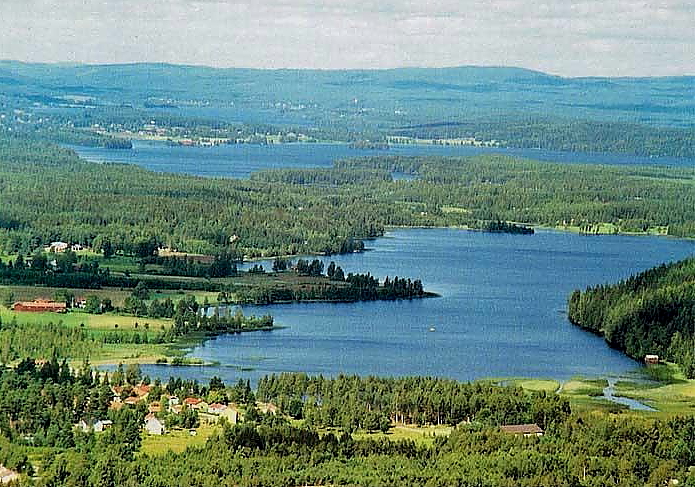
Rävvåla
This village is situated at the south end of the lake Saxen. It has been a place with blast furnaces and mills between the years 1634 - 1865. After that the dominating place of work was the Långfall mine, which existed for 100 years. The village has always had bergsmän, homesteaders, and small farmers too. Today the name is changed to Saxdalen
Our family lived in Rävvåla village and neighbouring district for an unknown hundred years until 1872 when they moved to Styggviken, a place on the northeast side of the sea.
To see the village today, goto :
Byn ligger vid sjön Saxens södra ände. Där har funnits masugn och hytta mellan 1634 - 1865. Därefter blev den dominerande arbetsplatsen Långfallsgruvan, som drevs i ca 100 år.
Vår familj bodde i Rävvåla ett okänt antal hundra år fram till 1872 då den flyttade till Styggviken, som ligger i sjöns nordöstkant. Byn har alltid bestått av bergsmän och småjordbrukare. Idag är namnet ändrat till Saxdalen.
In the land of iron ore
This is the middle part of Sweden, Grangärde parish is located at the red dot in the landscape Dalarna. It will take you 3 hours to go there from Stockholm by car.
A closer look shows the lake Väsman with the city Ludvika in one end and Sunnansjö/Broby in the other. Between them was a water way for freight of iron ore from north west to the mills around Ludvika. Rävåla (today Saxdalen) is situated at the red dot by the little lake in the southwest corner of Väsman, named Saxen
Lake Saxen, where Rävvåla (Saxdalen) is situated. It is in these surroundings our ancestors lived for hundreds and hundreds of years. In our story here we note
1. The place where Våg Jan rented a cottage when he was newly married,
2. This is where Våg Jan's family lived in a coaler croft owned by Ludvika bruk, the children grew up here,
3. Here is Ullnäset where Våg Erik's family stayed when he was a coaler in Ludvika bruk.
4. Styggviken cottage was situated here,
5. In Broby Per Erik and Sara lived wiht her parents in a cottage called Masens
6.This is the place of the house Per Erik bought in Broby 1890
Hundreds and hundreds of years... What was it like to live in Rävvåla?
"In ancient times, the inhabitants of Räfvåla did not have the best reputation. As a result of the village's isolated location and little contact with other people, and possibly even when prevailing general poverty had developed over time among the Räfvåla residents, a certain one-sidedness, which unfortunately manifested itself in savagery and rudeness. Deeds and vandalism on someone else's property were not uncommon and even as recently as a decade ago it was considered almost associated with danger to life and property for a stranger to travel through Räfvåla after dark, and it was certain that under the above conditions no one could pass completely untouched. Fortunately, in recent years a great change for the better has taken place, thanks to the work for the enlightenment and refinement of the people, carried out by both the primary school and the sobriety organizations, so that at present Räfvåla should in no way stand back for other places in cultural endeavor. and the residents here be a successful people as well as anything else.
The biggest celebration of the village seemed to have been "Mickels mass" = the first Sunday in October, because even today it is usually considered a major Sabbath break to work both the previous Saturday and the following Monday.
Räfvåla currently has about 600 inhabitants and almost every family has its own home, to which also belongs a larger or smaller land area. The so-called owner-occupied home idea can therefore be said to have been implemented in this place by age, although there have only been a few more possessed homeowners. Despite this benefit of an "own home", however, in general the Räfvåla people's financial lot has been anything but enviable. The land, which is barren and impoverished, has not been able to feed the numerous populations of the area, and the possibility of earning a living has been limited to what could be obtained at the farm and during the harvest season from the few large farmers who have existed. No significant handicraft has taken place, which is why often a large part of the more or less "powerless" for their subsistence had no choice but to seek out better-off districts and appeal to the general mercy.
But in recent years, increased access to good earnings both within the village and at the nearby Grängesbärg and Blötbetet minefields has also significantly increased general well-being. The old gray huts have gradually disappeared and new, nice homes, painted in the traditional red color with white knots, have taken their place. However, a shortcoming still pervades almost every one of these otherwise so pleasant homes, namely the absence of plantations and gardens. But if only the day comes when the interest in this important thing has awakened and every home is surrounded by its well-kept garden, Räfvåla will seem like a "little paradise" on earth. Let us hope that that day will soon be striped!".
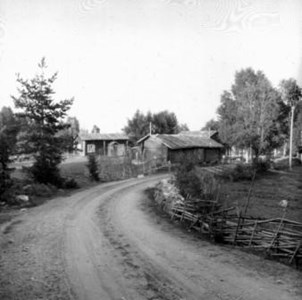
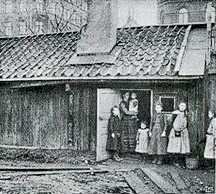
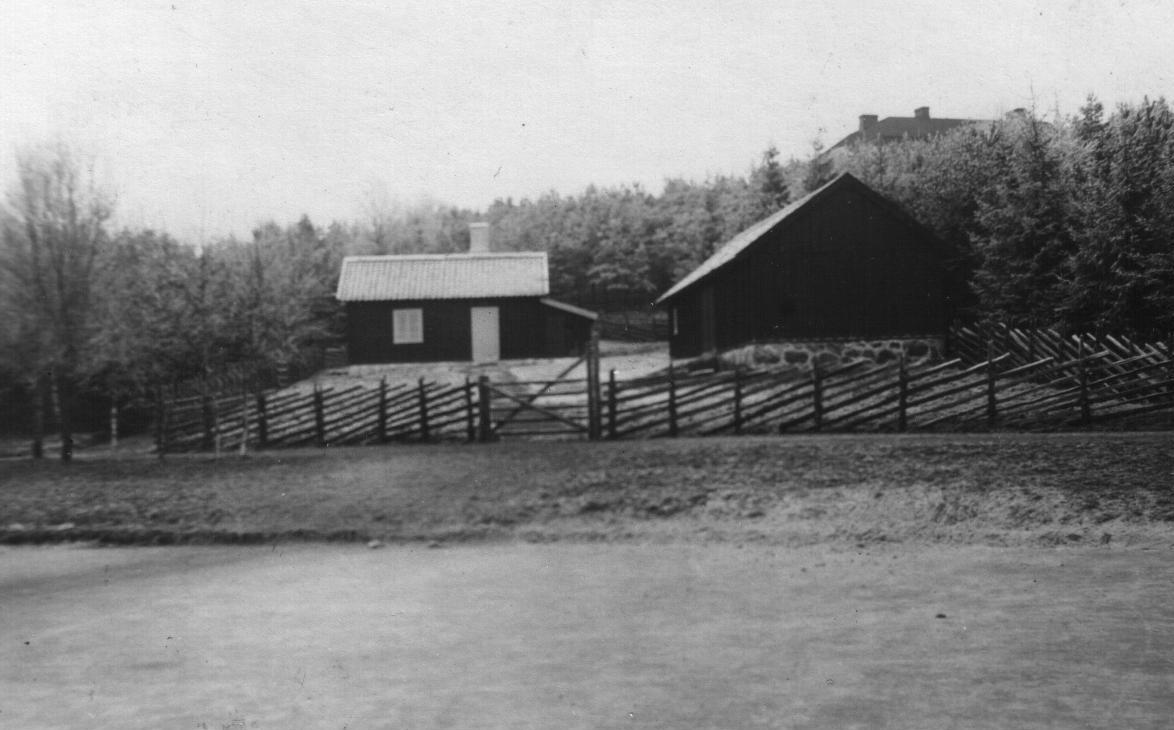
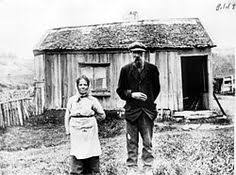
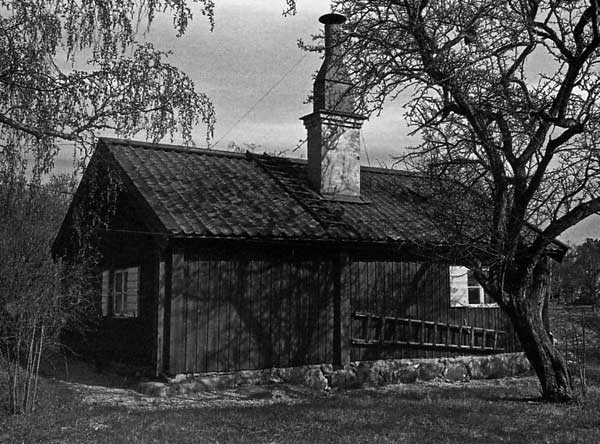
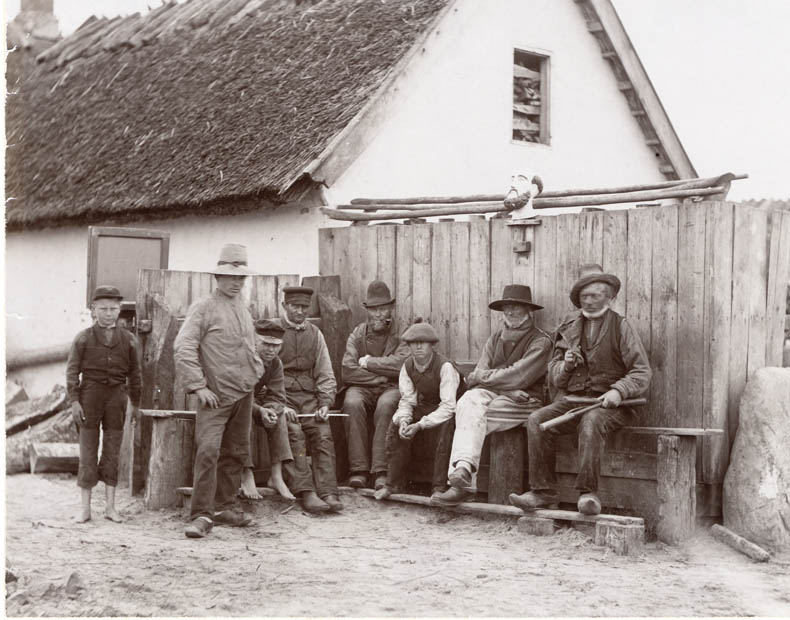
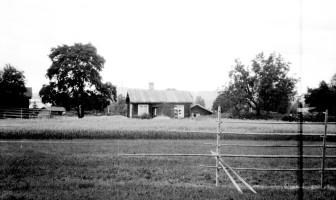
(The first and last picture is from Rävvåla, the others are time documents that illustrate the text)
(Den första och sista bilden är från Rävvåla, övriga är tidsdokument som illustrerar texten)
Låt oss vända oss till någon som kan beskriva livet där fram till de stora förändringarna som det moderna livet medförde!
Följande är hämtat ur en skrift från slutet av 1800-talet (Våra bygder i ord och bild. 1899-1908, från Saxdalen.blogspot.com):
"Räfvålas innebyggare hade i forna tider ej det bästa rykte om sig. Till följd av byns isolerade läge och ringa beröring med andra mänskor, samt möjligen även då rådande allmänt armod hade under tidernas lopp hos Räfvålaborna utvecklats en viss ensidighet, som tyvärr gav sig uttryck i vildhet och råhet. Nidingsdåd och skadegörelse å annans egendom voro ej sällsynta och till och med så sent som för något årtionde tillbaka ansågs det nästan förenadt med fara för lif och egendom för en främling att efter mörkrets inbrott färdas genom Räfvåla, och säkert var, att under ofvannämda förhållanden ingen fick passera alldeles oantastad. Lyckligtvis har under de senaste åren en storartad förändring till det bättre inträdt, tack vare de arbeten för folkets upplysning och förädling, som utförts af såväl folkskolan som nykterhetsorganisationerna, så att för närvarande torde Räfvåla icke i något afseende stå efter andra platser i kultur- sträfvande och bebyggarna här vara ett framgångsfolk så godt som något annat.
Byns största högtid tycktes af ålder hafva varit "Mickelsmässan" = första söndagen i Oktober, ty ännu i dag betraktas det vanligen som ett stort sabbatsbrott att arbeta såväl föregående lördag som påföljande måndag.
Räfvåla har för närvarande omkring 600 invånare och nästan hvarje familj har sin egen bostad, hvartill äfven hör ett större eller mindre jordområde. Den s. k. egnahemsidén kan därför sägas vara af ålder genomförd på denna plats, ehuru endast ett fåtal mera besutna hemmansägare funnits. Trots denna förmån af ett "eget hem" har dock i allmänhet Räfvålafolkets ekonomiska lott varit allt annat än afundsvärd. Jorden, som är karg och obördig, har icke kunnat föda bygdens talrika befolkning och möjligheten till erhållande af arbetsförtjänst har varit begränsad till hvad som kunnat fås vid bruket och under skördetiden hos de få större jordbrukare, som funnits. Någon nämvärd hemslöjd har icke förekommit, hvarför ofta en stor del af de mer eller mindre "orkeslösa" för sitt uppehälle icke haft annan utväg än att uppsöka bättre lottade trakter och vädja till den allmänna barmhärtigheten.
Men de senare årens ökade tillgång till god arbetsförtjänst såväl inom byn som vid de närbelägna gruffälten Grängesbärg och Blötbetet har äfven den allmänna välmågan i betydlig mån höjts. De gamla grå kojorna hafva så småningom försvunnit och nya, trefliga bostäder, målade i den traditionella röda färgen med vhita knutar, ha intagit deras plats. Dock en brist, och denna därtill ganska stor, vidlåder ännu nästan enhvar af dessa i öfright så trefliga hem, nämligen frånvaron af planteringar och trädgårdsan- läggningar. Men kommer blott den dag, då inträsset för denna viktiga sak vaknat och varje hem står omgifvet af sin välskötta trädgård, skall Räfvåla te sig som ett "litet paradis" på jorden. Låtom oss hoppas, att den dagen snart randas!"
Continue to the next side/Gå vidare till nästa sida: